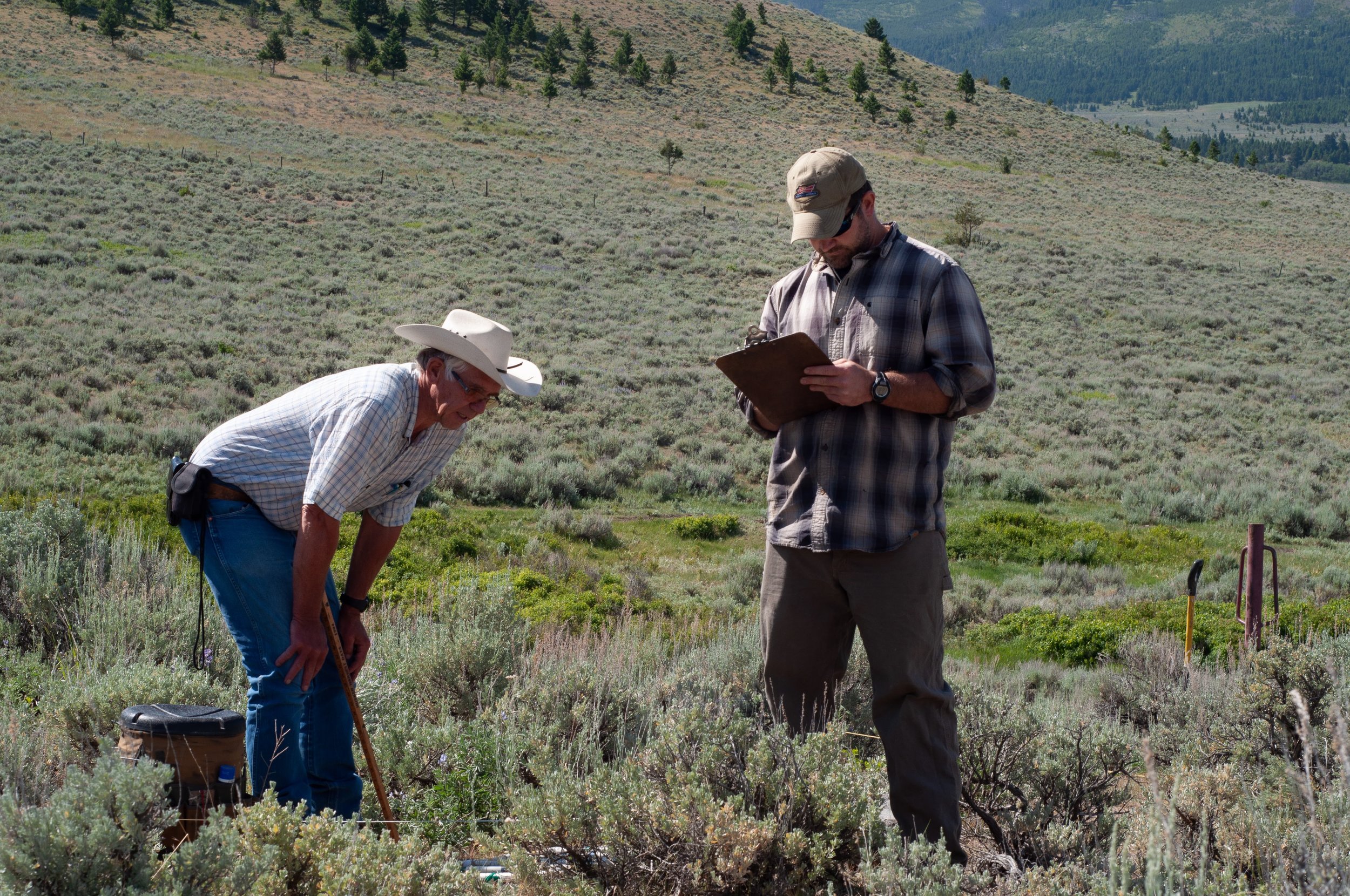Overview
Our family has been living and working on the same land for over 135 years. We are proud of the conservation efforts and partnerships we have been part of over the years and are dedicated to continuing ranching with the long term health of the rangeland, waterways, forest, and foothills in mind. Below we describe some of the many ways we do this.
STEWARDSHIP AWARDS
2008 Excellence in Grazing Award • 2007 Good Neighbor Award • 2002 Montana Tree Farmer of the Year
Conservation Easements
The majority of our ranch land has now been placed in conservation easements. These easements have been a tool for us to capture some of the “blue sky” value of our landscape that makes Montana land so expensive while ensuring that the land will remain intact for generations to come. These easements have varying goals and rules associated with them. Examples of protections include limiting development and house sites, limiting “ag splits” or number ownerships, ensuring hunter access, and protecting native grasses and shrubs.
Watershed Protection
Our water resources allow us to produce high-quality forage throughout the growing season, so we work hard to use them efficiently and effectively. We aim to only take what we need for irrigation purposes and have actively worked to improve riparian buffers and habitat for the pure strain of cutthroat trout that are found in our watershed. Our river restoration efforts began early on with Newman Raymond, father of Darlene Mannix, who won conservation awards for "improving fish habitat by damming up Frazier Creek to create a few small ponds on the place. Since then, we’ve learned much more about best technologies for improving fish habitat and have partnered with Trout Unlimited for over a decade on various projects to install fish ladders, fish screens, and restore sections of creek to improve spawning ground for trout.
Rangeland Health
We understand that at the foundation of our livelihood is the health of the soil and rangeland that we graze our cattle on. We manage our land using a variety of “best practices” including:
Intensive rotational grazing: or shorter duration grazing with longer rest periods, to increase pasture yield and improve the distribution of forage.
Cover crops: To jump-start soil biology, increase soil carbon, improve soil structure, and increase water infiltration.
Biological weed control: By partnering with sheep stockmen to run approximately 1500 ewes to naturally control an invasive weed called Spotted Knapweed
To keep track of rangeland health across our pastures, we have established a rangeland monitoring program with sites that we sample for biodiversity, soil health, and other metrics over time.
Living with Predators
As a result of the largest intact ecosystem of the Blackfoot Valley so close to the Bob Marshall Wilderness, large predators such as grizzlies, wolves, and lions are a constant and growing presence on our landscape. As healthy populations of bears and wolves continue to grow, conflicts with livestock are inevitable. However, we are working with conservation groups such as the Blackfoot Challenge and wildlife biologists to mitigate their impact, prevent conflicts, and avoid confrontations. One example includes participating in the carcass pickup program, which removes livestock carcasses from the ranch to be composted in Missoula and avoid bone piles that can be attractants for predators. Another has been participating in the range riding program, which helps to monitor predator populations and activity, and maintains a human presence on the landscape. To date, we have been fortunate enough to have relatively few livestock depredations, and have not yet had to resort to lethal predator control.
Managing our Forests/Sustainable Timber Harvest
We strategically harvest timber, usually for firewood, but occasionally to do larger timber sales as well. Randy Mannix puts his forestry degree to work thinning stands, reducing fire danger, allowing light to reach the forest floor, and improving the health of remaining trees.



